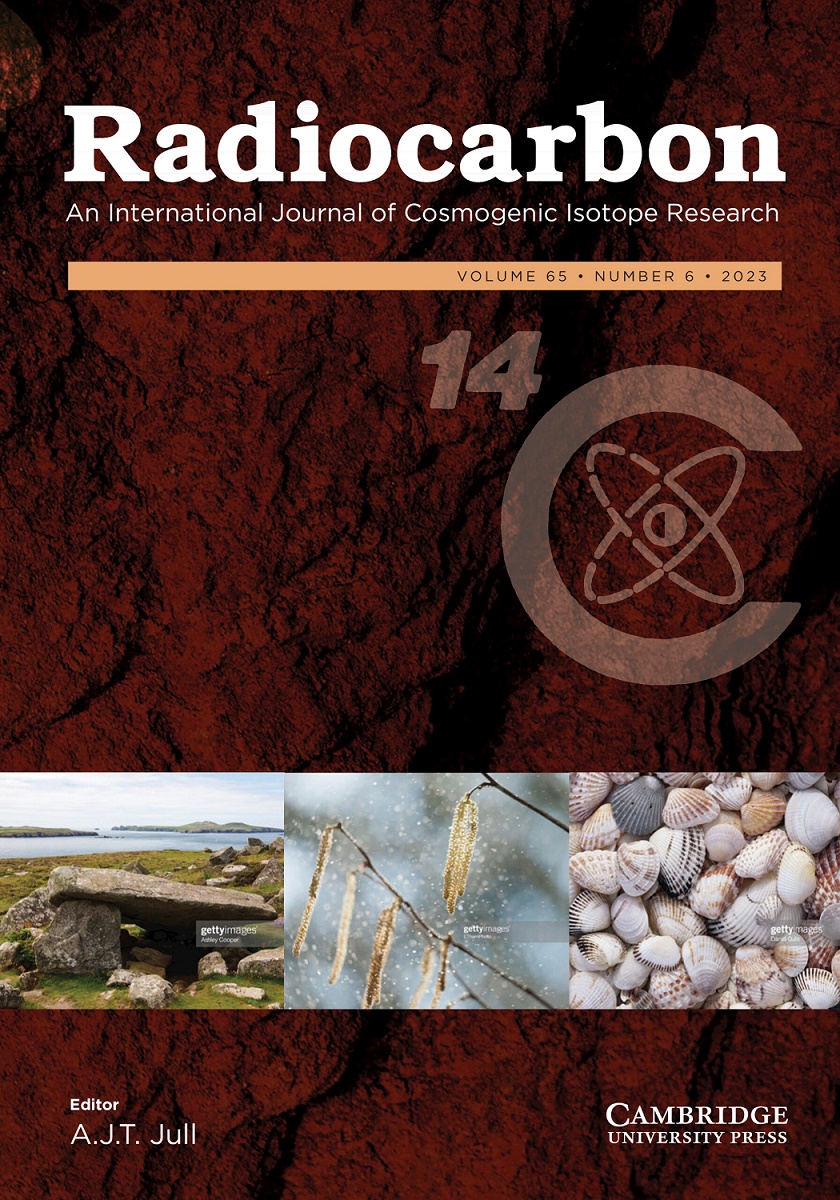MERIDIONAL MIGRATIONS OF THE INTERTROPICAL CONVERGENCE ZONE DURING THE LAST DEGLACIATION IN THE TIMOR SEA DETECTED BY EXTENSIVE RADIOCARBON DATING
IF 1.3
3区 地球科学
Q2 GEOCHEMISTRY & GEOPHYSICS
引用次数: 0
Abstract
At the Intertropical Convergence Zone (ITCZ), the northern and southern Tradewinds converge, and this region is characterized by low atmospheric pressure and high precipitation. The climate in the Timor Sea is characterized by seasonal precipitation changes driven by meridional migrations of the ITCZ and the monsoonal front. The ITCZ shifts in response to changes in the thermal balance between the northern and southern hemispheres. Thus, reconstruction of paleo-precipitation in the Timor Sea is expected to reveal past changes in both regional and global climate, the latter through inference of the ITCZ position. To reconstruct paleo-precipitation in the Timor Sea, we performed extensive radiocarbon analysis on both planktonic foraminifera and total organic carbon (TOC), which is derived from terrestrial and marine sources. Increased precipitation enhances the fraction of relatively old, terrestrial carbon to the core site, which in turn increases the difference between the ages of TOC and planktonic foraminifera. Variations in radiocarbon ages reveal that during northern hemisphere cooling intervals such as Heinrich Stadial 1 and the Younger Dryas, the ITCZ was in a southern position, thus increasing precipitation in the Timor Sea. However, the Timor Sea was dryer during the Bølling–Allerød warming as the ITCZ shifted northward.通过大范围放射性碳年代测定发现的帝汶海最后一次脱冰期热带辐合带的经向迁移
在热带辐合带(ITCZ),南北贸易风汇合,该地区的特点是气压低、降水量大。帝汶海的气候特点是,受 ITCZ 和季风前线经向移动的影响,降水量会发生季节性变化。ITCZ 随南北半球热平衡的变化而移动。因此,帝汶海古降水的重建有望揭示过去区域和全球气候的变化,后者是通过推断ITCZ的位置来实现的。为了重建帝汶海的古降水量,我们对浮游有孔虫和总有机碳(TOC)进行了广泛的放射性碳分析。降水量的增加增加了流向岩心地点的相对古老的陆地碳的比例,这反过来又增加了 TOC 和浮游有孔虫年龄之间的差异。放射性碳年龄的变化显示,在北半球变冷时期(如海因里希中冰期 1 和少干期),ITCZ 处于南半球位置,从而增加了帝汶海的降水量。然而,在博林-阿勒罗德气候变暖期间,由于 ITCZ 北移,帝汶海更加干燥。
本文章由计算机程序翻译,如有差异,请以英文原文为准。
求助全文
约1分钟内获得全文
求助全文
来源期刊

Radiocarbon
地学-地球化学与地球物理
CiteScore
16.20
自引率
6.00%
发文量
85
审稿时长
6-12 weeks
期刊介绍:
Radiocarbon serves as the leading international journal for technical and interpretive articles, date lists, and advancements in 14C and other radioisotopes relevant to archaeological, geophysical, oceanographic, and related dating methods. Established in 1959, it has published numerous seminal works and hosts the triennial International Radiocarbon Conference proceedings. The journal also features occasional special issues. Submissions encompass regular articles such as research reports, technical descriptions, and date lists, along with comments, letters to the editor, book reviews, and laboratory lists.
 求助内容:
求助内容: 应助结果提醒方式:
应助结果提醒方式:


